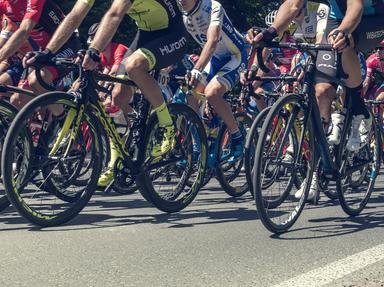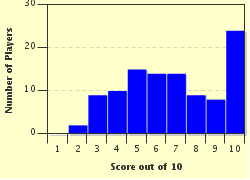Quiz Answer Key and Fun Facts
1. The first professional classic of the season is traditionally the Milan-San Remo. What cyclist dominated this classic in the 1960's and 1970's by winning the race seven times?
2. The Tour of Flanders is famous for its cobbled hills. Which of the following is not one of the cobbled hills used in the Tour of Flanders?
3. Since inception, the Gent-Wevelgem has started in Ghent, but in 2004 the start was moved. Where was the start of the race moved in 2004?
4. The "Queen of the Classics," or Paris-Roubaix, is one of the most prestigious races on the racing calendar. What is the trophy that the winner of the race each year receives?
5. The Amstel Gold race is known for having a hilly and dangerous course. What exactly is the race named after?
6. What is the English translation of La Fleche Wallonne?
7. The Liege-Bastogne-Liege is one of the Ardennes Classics, which are famous for their climbs. Which of the following slopes doesn't have a steepness of over 10%?
8. The Clasica de San Sebastian is widely known for being a climber's classic. Which of the following mountains is traditionally used in the Clasica de San Sebastian?
9. The Paris-Tours is one of the oldest classics on the cycling calendar, first being raced in 1896. In 1921, what rider won the Paris-Tours in freezing conditions?
10. The Giro di Lombardia is traditionally the last classic of the season. Which of the following is a nickname of the Giro di Lombardia?
Source: Author
ThurstAsh
This quiz was reviewed by FunTrivia editor
Nightmare before going online.
Any errors found in FunTrivia content are routinely corrected through our feedback system.


